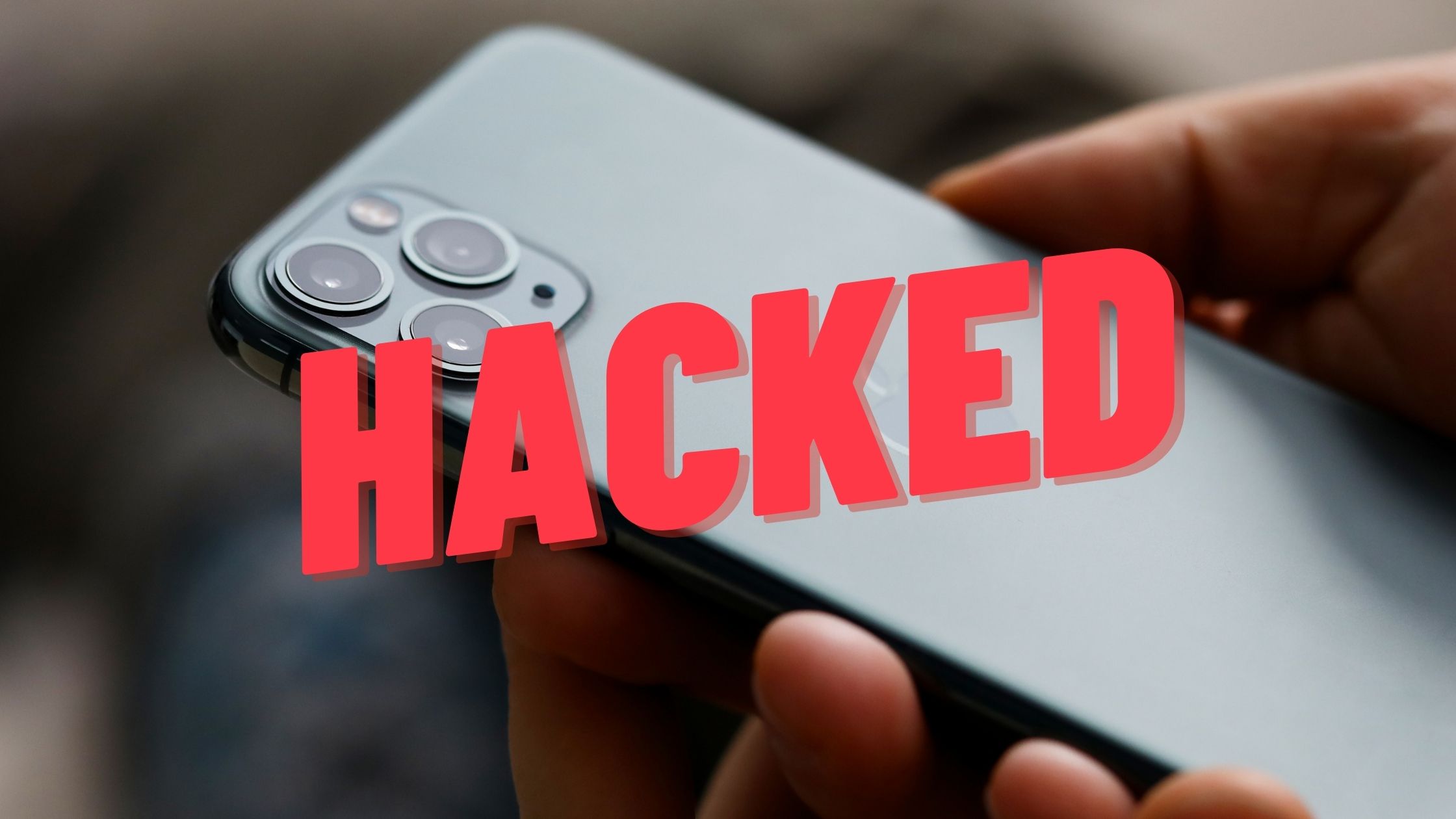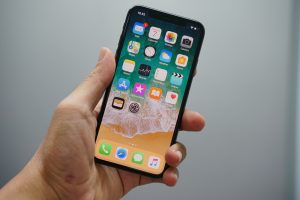Signs of a Hacked iPhone 13
As technology continues to advance, the risk of security breaches and hacking incidents has become a prevalent concern for iPhone 13 users. It is crucial to be vigilant and aware of the signs indicating a potential security breach on your device. Here are some key indicators that your iPhone 13 may have been compromised:
-
Unexplained Battery Drain: If you notice a sudden and significant decrease in your iPhone 13's battery life, it could be a sign of malicious activity. Hacked devices often experience increased power consumption as a result of unauthorized background processes running on the device.
-
Unusual Data Usage: Keep an eye on your data usage patterns. If you observe a spike in data consumption without any corresponding increase in your own usage, it could indicate that your iPhone 13 is being used for unauthorized activities, such as transmitting data to external servers without your knowledge.
-
Unexpected Pop-Up Ads and Redirects: Intrusive pop-up ads and unexpected redirects to unfamiliar websites are red flags for a compromised device. These occurrences may indicate the presence of adware or malware on your iPhone 13, potentially resulting from a security breach.
-
Unexplained Account Activities: Be vigilant about any unexplained activities related to your accounts, such as unauthorized logins, changes in settings, or unfamiliar transactions. These could be indications that your iPhone 13 has been hacked, and your personal information may be at risk.
-
Performance Issues: A hacked iPhone 13 may exhibit performance issues, including slow responsiveness, frequent app crashes, or unexplained system errors. These symptoms could be attributed to the presence of malicious software impacting the device's normal operations.
-
Suspicious Network Behavior: If your iPhone 13 is connecting to unknown or suspicious networks without your consent, it could be a sign of unauthorized access or manipulation by external entities.
-
Unexplained Jailbreak: If your iPhone 13 has been jailbroken without your knowledge or consent, it is a clear indication of a security breach. Jailbreaking removes Apple's built-in security measures, leaving the device vulnerable to various threats.
Being aware of these signs is crucial for promptly addressing potential security breaches and safeguarding the integrity of your iPhone 13. If you notice any of these indicators, it is essential to take immediate action to mitigate the risks and protect your device and personal data from further compromise.
Steps to Take When You Suspect a Security Breach
Discovering a potential security breach on your iPhone 13 can be alarming, but taking immediate and decisive action is crucial to mitigate the risks and protect your device and personal data. Here are the essential steps to take when you suspect a security breach:
-
Isolate Your Device: Upon suspecting a security breach, disconnect your iPhone 13 from any Wi-Fi networks and disable Bluetooth to prevent unauthorized access and data transmission. By isolating your device from external connections, you can minimize the potential impact of the security breach and prevent further compromise of your data.
-
Change Your Passwords: It is imperative to change the passwords for your Apple ID, email accounts, and any other sensitive accounts linked to your iPhone 13. Select strong, unique passwords for each account to enhance security. This step helps prevent unauthorized access to your personal information and minimizes the risk of further compromise.
-
Update Your Device: Check for and install any available software updates for your iPhone 13. Apple frequently releases security patches and updates to address vulnerabilities and enhance device security. Keeping your device's software up to date is essential for addressing known security issues and strengthening its defenses against potential threats.
-
Scan for Malware: Use reputable security and antivirus software to scan your iPhone 13 for malware, adware, or any other malicious software. If any suspicious files or applications are detected, follow the recommended actions to remove or quarantine them. Regular malware scans can help identify and eliminate potential security threats.
-
Review App Permissions: Review the permissions granted to installed apps on your iPhone 13. Ensure that each app has appropriate access to device features and data. Revoke permissions for any suspicious or unnecessary apps that may pose security risks. Limiting app permissions can help prevent unauthorized access to your device and personal information.
-
Backup and Restore: Create a backup of your iPhone 13's data and settings using iCloud or iTunes. Afterward, consider restoring your device to its factory settings. This process can help remove any potentially compromised software or settings, providing a fresh start for your device's security.
-
Monitor Financial and Account Activities: Keep a close eye on your financial accounts, credit cards, and other sensitive accounts for any unauthorized or suspicious activities. Report any unauthorized transactions or changes to your financial institutions and take necessary steps to secure your accounts.
-
Enable Two-Factor Authentication: Enhance the security of your Apple ID and other accounts by enabling two-factor authentication. This additional layer of security helps prevent unauthorized access, even if your passwords are compromised.
By following these steps when you suspect a security breach on your iPhone 13, you can effectively address the potential risks and strengthen the security of your device and personal data. It is essential to remain vigilant and proactive in safeguarding your iPhone 13 against security threats.
How to Secure Your iPhone 13 After a Security Breach
After experiencing a security breach on your iPhone 13, it is crucial to take immediate and comprehensive measures to secure your device and prevent further compromise of your personal data. Here are the essential steps to effectively secure your iPhone 13 after a security breach:
1. Reset Your Device
Initiate a complete reset of your iPhone 13 to erase all existing data and settings. This process will remove any potentially compromised software or configurations, providing a clean slate for securing your device.
2. Install Software Updates
Check for and install any available software updates for your iPhone 13. Keeping your device's software up to date is critical for addressing known security vulnerabilities and strengthening its defenses against potential threats.
3. Enable Find My iPhone
Activate the "Find My iPhone" feature on your device. This functionality allows you to locate your iPhone 13 remotely, lock it, or erase its data in case of loss or theft. Enabling this feature enhances the security and traceability of your device.
4. Implement Strong Passcodes
Set a strong alphanumeric passcode for your iPhone 13 to enhance its security. Avoid using easily guessable combinations and opt for a unique passcode that provides robust protection against unauthorized access.
5. Enable Touch ID or Face ID
Leverage the biometric security features of your iPhone 13, such as Touch ID or Face ID, to add an additional layer of security. These features provide convenient yet secure methods for unlocking your device and authenticating access.
6. Review and Restrict App Permissions
Carefully review the permissions granted to installed apps on your iPhone 13. Restrict access to sensitive device features and personal data for apps that do not require such permissions, minimizing the risk of unauthorized access and data compromise.
7. Implement Two-Factor Authentication
Enable two-factor authentication for your Apple ID and other relevant accounts linked to your iPhone 13. This additional security measure adds a verification step beyond passwords, significantly enhancing the protection of your accounts.
8. Regularly Back Up Your Data
Establish a routine for backing up your iPhone 13's data using iCloud or iTunes. Regular backups ensure that your important information is securely stored and can be restored in the event of data loss or device compromise.
9. Educate Yourself on Phishing and Scams
Stay informed about common phishing techniques and scams targeting iPhone users. Be cautious of suspicious emails, messages, or calls requesting personal information, and refrain from clicking on unfamiliar links or attachments.
10. Seek Professional Assistance
If you encounter persistent security concerns or technical challenges, consider seeking professional assistance from Apple Support or authorized service providers. Their expertise can help address complex security issues and ensure the integrity of your iPhone 13.
By diligently implementing these measures, you can effectively secure your iPhone 13 after a security breach, fortifying its defenses and safeguarding your personal data against potential threats. Remaining proactive and informed about security best practices is essential for maintaining the integrity and security of your device in an ever-evolving digital landscape.
Seeking Professional Help: When to Contact Apple Support
Seeking professional assistance from Apple Support becomes imperative when encountering persistent security concerns or technical challenges with your iPhone 13. While proactive measures can address many security issues, certain situations may necessitate the expertise of Apple's support services.
Complex Security Incidents
In the event of complex security incidents, such as persistent malware infections, unauthorized access to sensitive data, or sophisticated hacking attempts, contacting Apple Support is crucial. Their specialized knowledge and resources enable them to assess and address intricate security threats that may require advanced technical intervention.
Unresolved Technical Issues
When encountering unresolved technical issues following a security breach, reaching out to Apple Support can provide valuable insights and solutions. This includes instances where standard troubleshooting methods have proven ineffective in restoring the security and functionality of your iPhone 13.
Device Performance Concerns
If your iPhone 13 exhibits compromised performance or unusual behavior even after implementing security measures, contacting Apple Support is advisable. Their technicians can conduct in-depth diagnostics to identify underlying issues impacting the device's security and performance.
Software and Firmware Concerns
Issues related to software vulnerabilities, firmware integrity, or compatibility challenges may necessitate the expertise of Apple Support. They can provide guidance on updating, repairing, or reinstalling the device's software and firmware to mitigate security risks and restore optimal functionality.
Data Recovery and Restoration
In the unfortunate event of data loss or corruption resulting from a security breach, Apple Support can offer assistance in data recovery and restoration efforts. Their expertise in data management and device recovery can be invaluable in salvaging essential information and restoring the integrity of your iPhone 13.
Proactive Security Guidance
Beyond addressing immediate security concerns, contacting Apple Support can also provide proactive security guidance. Their experts can offer recommendations on enhancing the overall security posture of your iPhone 13, including best practices for data protection, privacy settings, and proactive security measures.
By recognizing the scenarios that warrant reaching out to Apple Support, iPhone 13 users can effectively leverage the expertise and resources of Apple's support services to address security breaches and safeguard their devices. Timely and informed engagement with professional support can significantly contribute to the resilience and security of your iPhone 13 in the face of evolving digital threats.


